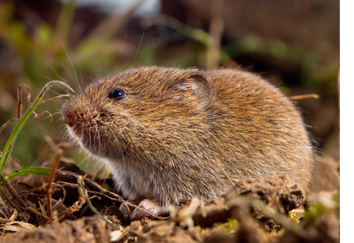Comprehensive Vole Pest Control Services in Utah
Comprehensive Vole Pest Control Services in Utah
Blog Article
Comprehensive Guide to Effective Vole Insect Control: Infestation Recognition and Therapy Techniques
In the world of reliable insect control, vole invasions pose an unique challenge that requires a tactical technique. By exploring the nuances of vole habits, recognizing key indicators of problem, and assessing a variety of control options, one can establish a detailed technique to deal with these evasive insects.
Comprehending Vole Habits
Vole actions is characterized by their burrowing routines and quick recreation rates, making them a challenging pest to manage efficiently. These small rodents commonly produce intricate passage systems underground, using them for shelter, food storage, and transportation. Voles are herbivores, consuming a range of plants, grasses, bulbs, and origins, which can cause significant damage to gardens, orchards, and grass. Their rapid reproductive price additional makes complex control initiatives, with ladies with the ability of generating numerous litters in a single year, each including several spawn.
Voles are most energetic during the morning and night hours, investing the bulk of their time foraging for food. Their burrowing habits not only interrupt grass and gardens but additionally make them testing to remove and find. Recognizing vole habits is important for efficient pest control approaches. By recognizing their burrow places, keeping an eye on feeding areas, and executing targeted control methods, such as capturing or habitat adjustment, vole problems can be handled successfully.
Indications of Vole Invasion

Prevention Approaches
Applying reliable avoidance strategies is vital in minimizing vole invasions and securing plant life from their devastating feeding practices. To stop vole infestations, it is crucial to begin by eliminating prospective food resources and shelter.
Routinely checking the building for signs of vole task, such as paths and burrow openings, is critical for early discovery and punctual action. If vole activity is presumed, consider using repellents or catches tactically put near their pathways.
Non-Lethal Control Approaches
To properly manage vole populaces while focusing on humane approaches, non-lethal control techniques supply useful options for reducing vole damages in gardens and landscapes. One effective method is using physical obstacles such as equipment fabric or cable mesh to secure at risk plants. These obstacles can be hidden at the very least 12 inches bent and deep at a 90-degree angle to prevent voles from delving below. In addition, environment modification can discourage voles by minimizing their liked food resources and hiding spots. Maintaining a well-mowed lawn, removing particles, and maintaining plant life cut can make the setting much less enticing to voles.

Lethal Control Options
One reliable approach for dealing with Get the facts vole problems in landscapes and yards entails the strategic use of dangerous control options. When encountered with a serious vole problem that non-lethal methods have fallen short to have, implementing lethal control measures becomes important. Generally, when utilizing deadly control choices, it is necessary to do so sensibly and in conformity with regional guidelines to properly take care of vole problems.
Conclusion
Finally, reliable vole bug control needs a thorough understanding of vole habits, identification of indicators of invasion, implementation of avoidance methods, and usage of both deadly and non-lethal control methods. By incorporating these methods, individuals can properly manage vole populaces and protect their residential property from damage. It is necessary to attend to vole invasions without delay to stop more concerns and reduce the effect on the surrounding setting.
Given the intricate tunnel systems and rapid reproduction prices particular of voles, recognizing the indications of vole problem becomes vital in reliable parasite control. One of the primary indicators of vole existence is the existence of surface area paths or routes in grass or snow, usually concerning 1-2 inches vast, created as voles travel between their burrows and food resources.To effectively handle vole populations while prioritizing gentle approaches, non-lethal control Website techniques use practical services for lowering vole damages in landscapes and gardens.One effective technique for addressing vole infestations in gardens and landscapes involves the critical use of deadly control options. vole lawn damage.In final thought, efficient vole parasite control needs a comprehensive understanding of vole behavior, recognition of indications of infestation, implementation of prevention techniques, and application of both non-lethal and dangerous control techniques
Report this page